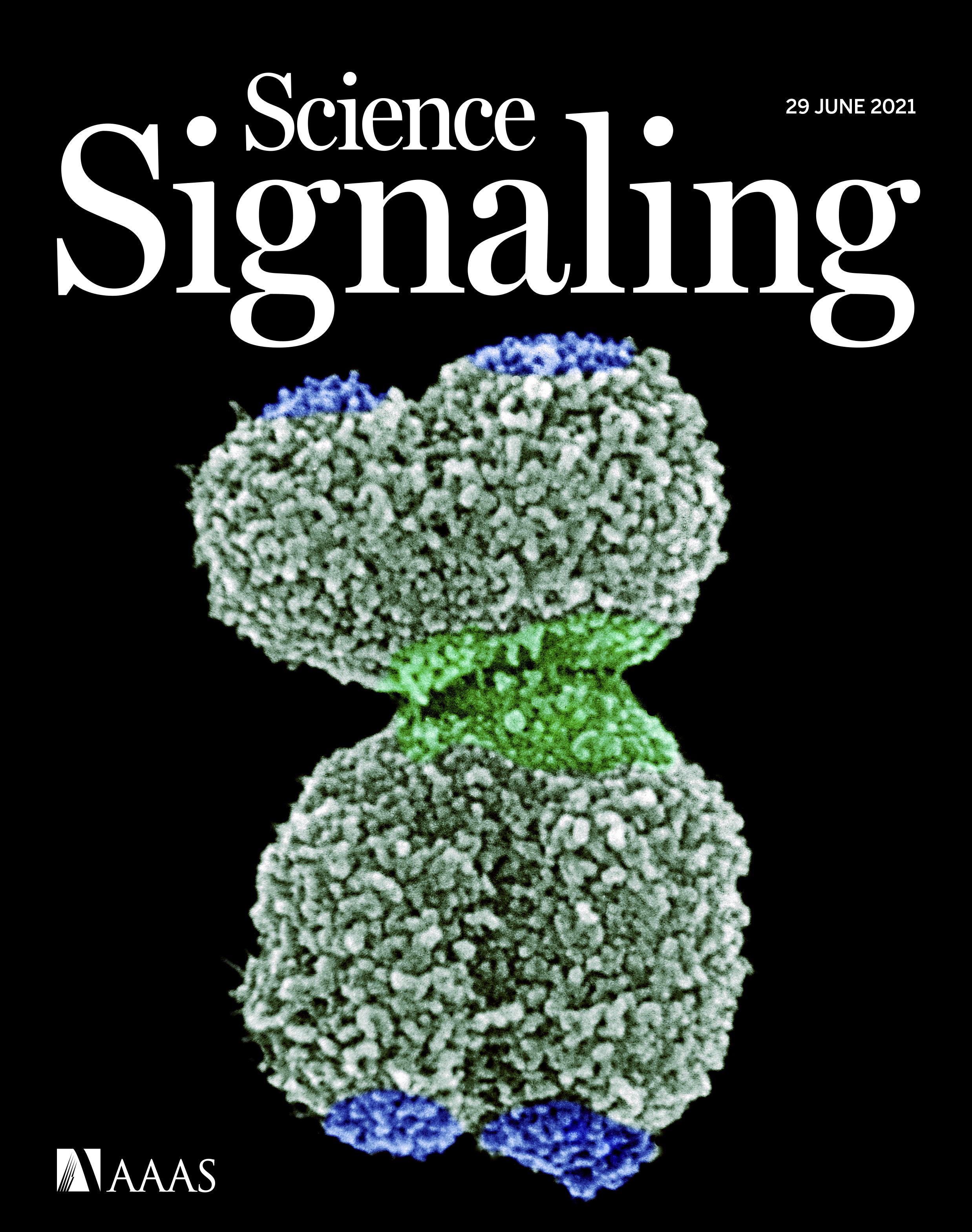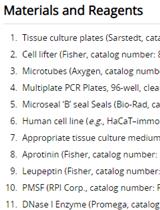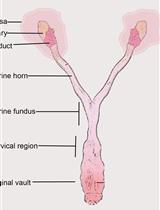- EN - English
- CN - 中文
Amplification and Quantitation of Telomeric Extrachromosomal Circles
端粒染色体外环的扩增和定量
发布: 2023年03月05日第13卷第5期 DOI: 10.21769/BioProtoc.4627 浏览次数: 1904
评审: Gal HaimovichShyam SrivatsAnonymous reviewer(s)
Abstract
Telomeres are structures that cap the ends of linear chromosomes and play critical roles in maintaining genome integrity and establishing the replicative lifespan of cells. In stem and cancer cells, telomeres are actively elongated by either telomerase or the alternative lengthening of telomeres (ALT) pathway. This pathway is characterized by several hallmark features, including extrachromosomal C-rich circular DNAs that can be probed to assess ALT activity. These so-called C-circles are the product of ALT-associated DNA damage repair processes and simultaneously serve as potential templates for iterative telomere extension. This bifunctional nature makes C-circles highly sensitive and specific markers of ALT. Here, we describe a C-circle assay, adapted from previous reports, that enables the quantitation of C-circle abundance in mammalian cells subjected to a wide range of experimental perturbations. This protocol combines the Quick C-circle Preparation (QCP) method for DNA isolation with fluorometry-based DNA quantification, rolling circle amplification (RCA), and detection of C-circles using quantitative PCR. Moreover, the inclusion of internal standards with well-characterized telomere maintenance mechanisms (TMMs) allows for the reliable benchmarking of cells with unknown TMM status. Overall, our work builds upon existing protocols to create a generalizable workflow for in vitro C-circle quantitation and ascertainment of TMM identity.
Keywords: Alternative lengthening of telomeres (端粒的替代延长)Background
To avoid the loss of genetic information and the acquisition of potentially lethal genomic aberrations during DNA replication, linear chromosomes possess nucleoprotein cap structures known as telomeres. Conversely, active telomere extension imparts cells with replicative immortality, which is essential during embryonic development (L. Liu et al., 2007), as well as during malignant transformation and cancer progression (Robinson and Schiemann, 2016; Robinson et al., 2019). In most developmental and tumorigenic contexts, telomere extension is carried out by the reverse transcriptase telomerase. However, telomeres are also extended in a telomerase-independent fashion through a mechanism known as alternative lengthening of telomeres (ALT), which is active in embryonic stem cells and early embryogenesis (L. Liu et al., 2007; Pickett and Reddel, 2015). Moreover, approximately 15% of tumors are reliant upon ALT for telomere synthesis, with some cancer types showing evidence of ALT in more than half of patients (Sung et al., 2020). Given the growing recognition of the prevalence and functional significance of ALT in both development and disease, establishing robust methods for monitoring ALT activity is of critical importance.
Telomere lengthening via ALT is mediated by homologous recombination (HR) between adjacent telomere templates, followed by DNA synthesis through a mechanism similar to break-induced replication (BIR) (Dilley et al., 2016; Roumelioti et al., 2016). Importantly, telomere HR and BIR generate small circular DNAs containing telomeric DNA sequences (T. Zhang et al., 2019).These telomeric extrachromosomal circles, termed C-circles, act as specific markers that can be used to quantitate ALT activity in biological samples (Henson et al., 2009). More broadly, multiple methods exist to assay telomere maintenance mechanism (TMM) identity. For example, HR of contiguous telomeres results in telomere sister chromatid exchange (T-SCE), a hallmark of ALT (Londono-Vallejo et al., 2004) that can be visualized using chromosome orientation fluorescence in situ hybridization (CO-FISH) (Cesare et al., 2015). In addition, ALT-associated HR and DNA synthesis are facilitated by the promyelocytic leukemia protein (PML) within structures known as ALT-associated PML bodies (ABPs) (Yeager et al., 1999; J. M. Zhang et al., 2019). APBs can be detected and quantified using a combined immunofluorescence/FISH approach (Henson et al., 2005). Lastly, mutational loss (Lovejoy et al., 2012) or downregulation (Robinson et al., 2020) of the ATRX/DAXX chromatin remodeling complex is widespread in ALT-driven cell lines and tumors and can be easily ascertained using sequencing or quantitative gene expression methods. Despite the established relationships between these molecular markers and ALT, they suffer from drawbacks that restrict their experimental utility. For instance, T-SCE can occur during telomeric DNA damage repair (Mao et al., 2016; H. Liu et al., 2018). Moreover, loss of ATRX and DAXX is not uniformly distributed in ALT-positive specimens (Lovejoy et al., 2012) and can be found in ALT-negative specimens as well (de Nonneville and Reddel, 2021). The variable nature of these markers necessitates a combinatorial approach to TMM classification that includes a sensitive and reliable method for assessing ALT.
Because of the high degree of specificity of C-circles for ALT (Henson et al., 2009) and their relationship to clinical features of ALT-driven cancers (Grandin et al., 2019), measuring and quantifying C-circle abundance has become the preferred method for assessing ALT activity, motivating the continual development of improved methods for C-circle quantitation. Furthermore, the diversity of biological contexts in which telomeres are actively maintained and the differences in telomere dynamics across organisms (Monaghan et al., 2018; Wright and Shay, 2000) create demand for generalized approaches to the interrogation of TMM identity. Here, we describe a protocol for C-circle quantitation, based upon previous reports (Lau et al., 2013; Henson et al., 2017), consisting of (i) rapid isolation and spectroscopic quantification of genomic and extrachromosomal DNA using the Quick C-circle Preparation (QCP) method, (ii) enrichment of extrachromosomal circular DNAs via rolling circle amplification (RCA), and (iii) determination of C-circle abundance using quantitative polymerase chain reaction (qPCR). We have applied this protocol across an array of biological and experimental contexts (Robinson et al., 2020 and 2021), asserting it as a generalizable platform for C-circle detection and, when paired with additional approaches, the assignment of TMM identity.
Materials and Reagents
1.5 mL Eppendorf tube
96-well microplate, flat bottom, clear (Greiner Bio-One, catalog number: 655101)
MultiplateTM 96-well PCR plates, low profile, clear (Bio-Rad, catalog number: MLL9601)
Cell line(s) of interest and appropriate media/culture reagents
ALT-positive cell line for source of C-circle positive control/standard curve DNA [e.g., U2OS (ATCC, catalog number: HTB-96), Saos-2 (ATCC, catalog number: HTB-85)]
Telomerase-positive cell line for source of C-circle negative control DNA [e.g., HeLa (ATCC, catalog number: CCL-2), HCT116 (ATCC, catalog number: CCL-247)]
Tris base (Fisher Scientific, catalog number: BP152)
Potassium chloride (KCl) (Fisher Scientific, catalog number: BP366)
Magnesium chloride hexahydrate (MgCl2·6H2O) (Fisher Scientific, catalog number: M35)
NP-40 (also known as IGEPAL® CA-630) (Sigma-Aldrich, catalog number: I3021)
Tween 20 (also known as Polysorbate 20) (Fisher Scientific, catalog number: BP337)
Deionized, nuclease-free H2O [purified using Q-Gard® 2 purification cartridge (Sigma-Aldrich, catalog number: QGARD00D2)]
Protease (7.5 AU) (QIAGEN, catalog number: 19155)
QuantiFluor® ONE dsDNA system (Promega, catalog number: E4871)
Φ29 DNA polymerase [includes 10× Φ29 reaction buffer and 20 mg/mL bovine serum albumin (BSA); New England Biolabs, catalog number: M0269)
dNTP set (100 mM each dNTP) (Thermo Fisher Scientific, catalog number: R0181)
UltraPureTM dithiothreitol (Invitrogen, catalog number: 15508013)
iQTM SYBR® Green Supermix (Bio-Rad, catalog number: 1708880)
C-circle primers (human and mouse)
Forward: 5′-CGGTTTGTTTGGGTTTGGGTTTGGGTTTGGGTTTGGGTT-3′
Reverse: 5′-GGCTTGCCTTACCCTTACCCTTACCCTTACCCTTACCCT-3′
36B4 primers (human)
Forward: 5′-CAGCAAGT GGGAAGGTGTAATCC-3′
Reverse: 5′-CCATTCTATCATCAACGGGTACAA-3′
36B4 primers (mouse)
Forward: 5′-ACTAATCCCGCCAAAGCAACC-3′
Reverse: 5′-GTAGCGGTTTTGCTTTTTCATCCT-3′
Quick C-Circle Preparation (QCP) lysis buffer (1×) (see Recipes)
1 M Tris-HCl, pH 8.5 (see Recipes)
Φ29 DNA polymerase master mix (2.16×) (see Recipes)
Equipment
Plate reader (Promega GloMax® Explorer Multimode Microplate Reader; catalog number: GM3500)
Thermal cycler for RCA (MJ MiniTM Personal Thermal Cycle; Bio-Rad, catalog number: PTC1148)
Thermal cycler for qPCR [Bio-Rad C1000 TouchTM Thermal Cycler Chassis (Bio-Rad, catalog number: 1841100) equipped with CFX96 Optical Reaction Module for Real-Time PCR (Bio-Rad, catalog number: 1845097)]
Software
CFX Maestro Software for CFX Real-Time PCR Instruments (Bio-Rad; https://www.bio-rad.com/en-us/product/cfx-maestro-software-for-cfx-real-time-pcr-instruments?ID=OKZP7E15)
Microsoft Excel 2019 (v16.0)
Procedure
文章信息
版权信息
© 2023 The Author(s); This is an open access article under the CC BY-NC license (https://creativecommons.org/licenses/by-nc/4.0/).
如何引用
Readers should cite both the Bio-protocol article and the original research article where this protocol was used:
- Robinson, N. J. and Schiemann, W. P. (2023). Amplification and Quantitation of Telomeric Extrachromosomal Circles. Bio-protocol 13(5): e4627. DOI: 10.21769/BioProtoc.4627.
- Robinson, N. J., Miyagi, M., Scarborough, J. A., Scott, J. G., Taylor, D. J. and Schiemann, W. P. (2021). SLX4IP promotes RAP1 SUMOylation by PIAS1 to coordinate telomere maintenance through NF-kappaB and Notch signaling. Sci Signal 14(689): eabe9613.
分类
癌症生物学 > 无限复制 > 细胞生物学试验
分子生物学 > DNA > DNA 定量
您对这篇实验方法有问题吗?
在此处发布您的问题,我们将邀请本文作者来回答。同时,我们会将您的问题发布到Bio-protocol Exchange,以便寻求社区成员的帮助。
提问指南
+ 问题描述
写下详细的问题描述,包括所有有助于他人回答您问题的信息(例如实验过程、条件和相关图像等)。
Share
Bluesky
X
Copy link













